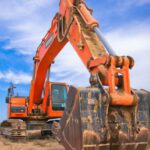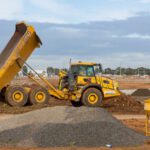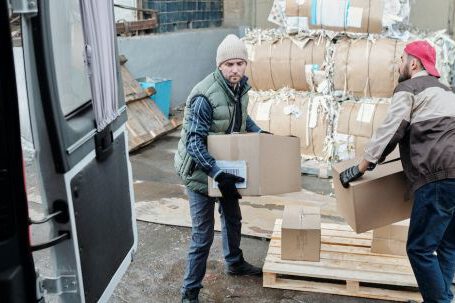The world of industrial hoists is full of complex machines that enable the efficient movement of heavy loads. Hoists are used in a wide range of industries, from construction and manufacturing to mining and agriculture. They are a critical part of any industrial operation, and proper use and maintenance is essential for safe and efficient operations. In this article, we will take a deep dive into the world of industrial hoists, exploring their types, uses, and maintenance requirements.
Types of Industrial Hoists
Industrial hoists come in a variety of types, each designed to meet specific needs. There are two main categories of hoists: powered hoists, which are driven by an electric motor, and manual hoists, which are operated by hand. Within those categories, there are several different types of hoists, including chain hoists, cable hoists, and air hoists.
Chain hoists are the most common type of hoist and are used for lifting and lowering heavy loads. They consist of a chain with a handle that is used to both lift and lower the load. Chain hoists are typically used for short-distance lifting and are ideal for applications where the load needs to be moved up or down a short distance.
Cable hoists are similar to chain hoists, but are operated with a rope or cable instead of a chain. Cable hoists are typically used for long-distance lifting and are commonly used in applications such as construction sites, manufacturing plants, and cargo loading.
Air hoists, also known as pneumatic hoists, are powered by compressed air. They are often used in hazardous environments, such as oil and gas facilities, where the risk of fire or explosions is high. Air hoists are also useful in applications where a high level of precision is required, such as in the aerospace and automotive industries.
Uses of Industrial Hoists
Industrial hoists are used in a wide range of applications, from construction and manufacturing to mining and agriculture. Hoists are used to lift and move heavy loads, such as machinery, tools, and materials. They can also be used to position loads at a specific height or angle. In addition, hoists can be used to move materials from one location to another, such as from the ground to the roof of a building.
In the construction industry, industrial hoists are used to lift and move heavy building materials, such as bricks and concrete blocks, from the ground to the roof. In manufacturing plants, hoists are used to move heavy machinery and tools from one area to another. In the mining industry, hoists are used to lift heavy loads such as ore and equipment from one level to another. In agriculture, hoists are used to move heavy farm equipment and supplies, such as hay bales and tractors.
Maintenance of Industrial Hoists
Proper maintenance of industrial hoists is essential for safe and efficient operations. Hoists should be inspected and serviced regularly to ensure that they are operating correctly and safely. Regular maintenance should include checking the hoist for wear and tear, inspecting the chain or cable for damage, and lubricating any moving parts.
In addition, it is important to ensure that the hoist is properly secured and anchored. Hoists should be securely attached to a solid surface, such as a wall or floor, to prevent them from tipping over or slipping. It is also important to ensure that the chain or cable is correctly tensioned to prevent it from coming off the hoist.
Finally, it is important to ensure that the hoist is used properly. The load should never exceed the hoist’s capacity and the hoist should never be used as a crane. In addition, any accessories, such as slings or hooks, should be inspected regularly to ensure that they are in good condition.
Conclusion
Industrial hoists are a critical part of any industrial operation, and proper use and maintenance is essential for safe and efficient operations. There are several different types of hoists, each designed to meet specific needs, and they are used in a wide range of industries. Proper maintenance of industrial hoists is essential for safe and efficient operations, and it is important to ensure that the hoist is properly secured and anchored, that the chain or cable is correctly tensioned, and that any accessories are in good condition.






